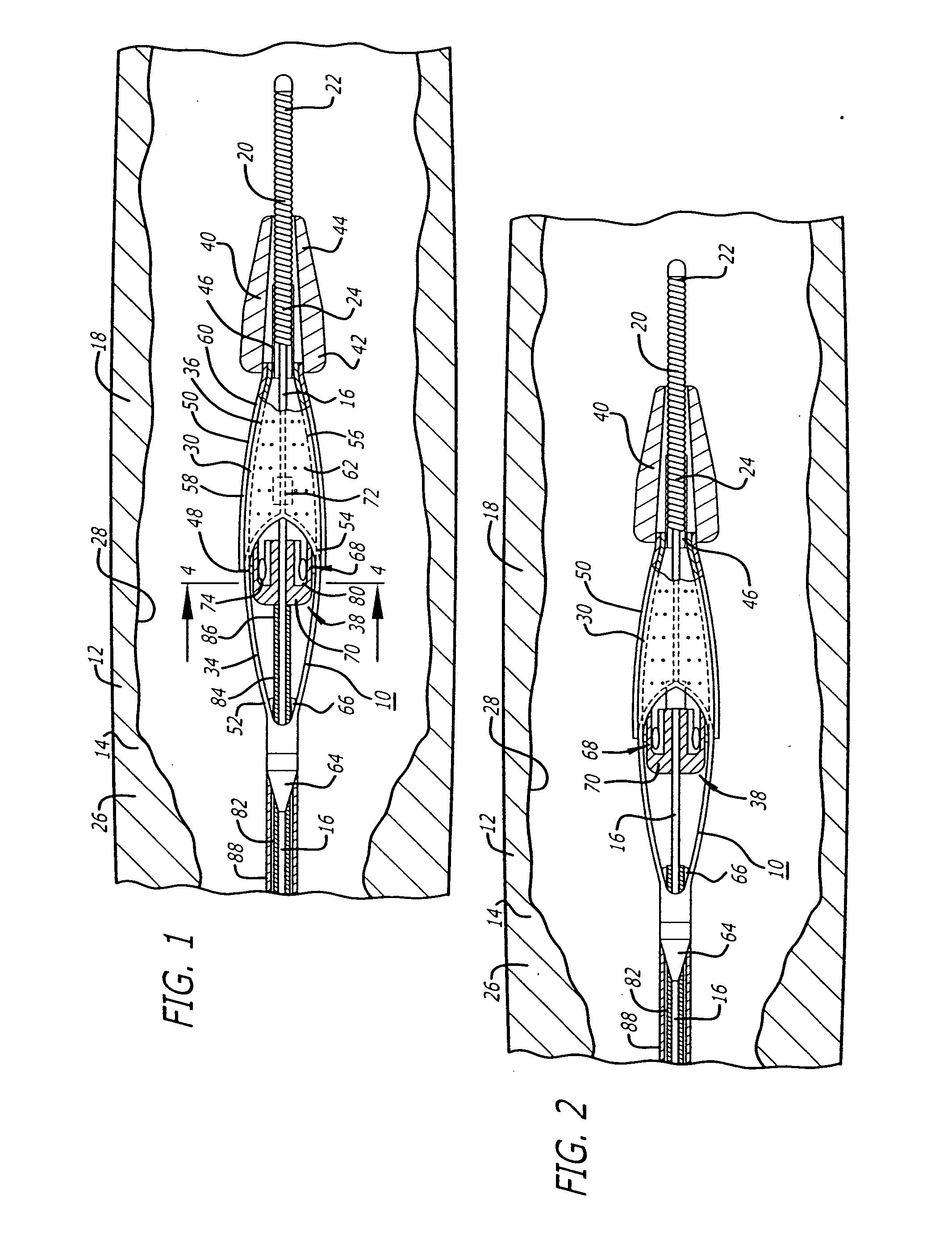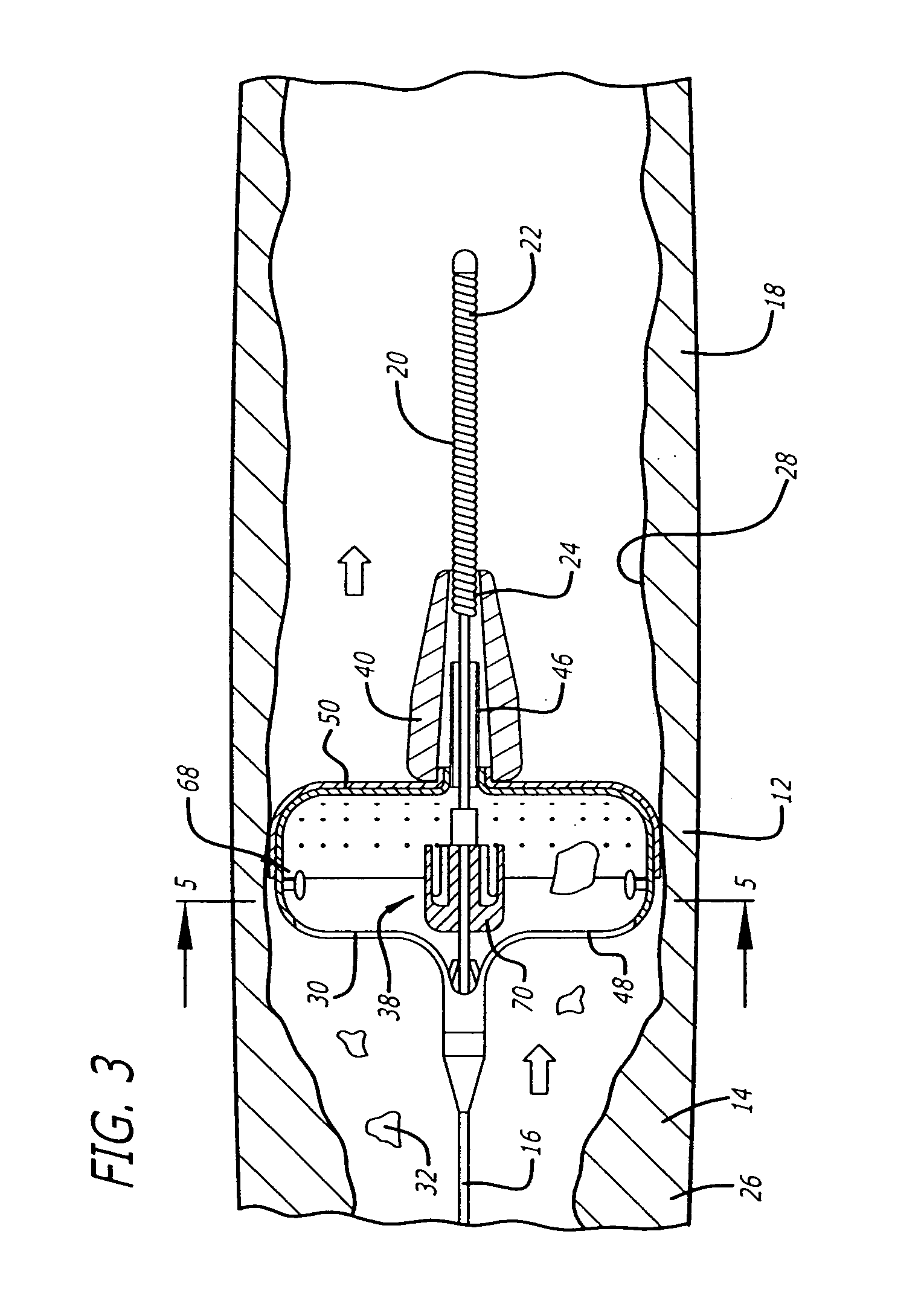Sheathless embolic protection system
a protection system and embolic technology, applied in the field of shieldless embolic protection systems, can solve the problems of emboli not always fully vaporized, may enter the bloodstream, and the patient's release into the circulatory system can be extremely dangerous, and achieve the effect of a higher degree of confidence in the efficient operation of the filtering system
- Summary
- Abstract
- Description
- Claims
- Application Information
AI Technical Summary
Benefits of technology
Problems solved by technology
Method used
Image
Examples
first embodiment
[0042] As shown in FIGS. 6-8, in a second version of the first embodiment, the inner tube 84 comprises the engaging element 70, and includes at least one slot 90 in the distal end 86 thereof, which opens in the distal direction, for receiving the tab member 74 of the engageable element 68 therein.
second embodiment
[0043] In the invention, as illustrated in FIGS. 9-10, the filter device 30 further includes a normally-compressed member 92, which is expandable and retained in the expanded condition by the compressing element 38 for compression of the filter device 30. The normally-compressed member 92 is biased to compress upon release of the compressing element 38, to release the compressed filter device 30 for expansion and deployment of the filter device 30. The normally-compressed member 92 includes a proximal end 94 and a distal end 96. The normally-compressed member 92 for example comprises a spring.
[0044] The filter device 30 further includes a stop 98 in the proximal portion 34 thereof, and a space 100 between the proximal portion 52 of the cage 40 and the stop 98 into which the tabs 66 are extendable to bear against the stop 98. The proximal end 94 of the spring 92 bears against the stop 98. The filter device 30 also includes an engaging member 102, engageable with the engageable elemen...
PUM
 Login to View More
Login to View More Abstract
Description
Claims
Application Information
 Login to View More
Login to View More - R&D
- Intellectual Property
- Life Sciences
- Materials
- Tech Scout
- Unparalleled Data Quality
- Higher Quality Content
- 60% Fewer Hallucinations
Browse by: Latest US Patents, China's latest patents, Technical Efficacy Thesaurus, Application Domain, Technology Topic, Popular Technical Reports.
© 2025 PatSnap. All rights reserved.Legal|Privacy policy|Modern Slavery Act Transparency Statement|Sitemap|About US| Contact US: help@patsnap.com



